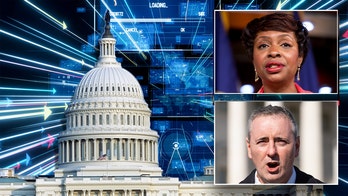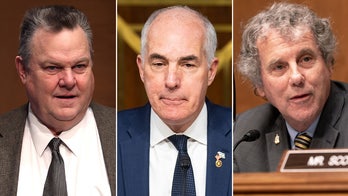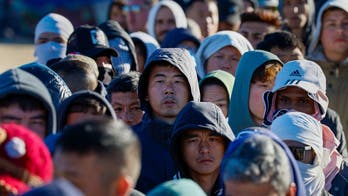
May 3, 2011: Samantha Ferrara, 19, waits in line for a job fair to open, in Independence, Ohio. (AP)
Even though employers added more than 200,000 jobs last month in the biggest hiring spree in five years, the jobless rate rose to 9 percent -- a psychological setback for a nation still struggling to recover from a deep recession.
The jobless rate rose in part because some people resumed their job search. In total, there were 13.7 million people unemployed in April, still almost double since before the recession began in December 2007.
Including part-time workers who would rather be working full time, plus people who have given up looking altogether, the percentage of "underemployed" people rose to 15.9 percent in April.
Not surprisingly, the White House chose to focus on the 244,000 jobs added to the economy in April -- the third straight month of more than 200,000 new jobs and the biggest hiring spree in five years.
"We're pleased about that," White House Press Secretary Jay Carney told reporters Friday. "We obviously have a lot more work to do. The recession cost the American labor force 8 million jobs and we're still digging ourselves out of that hole."
Private employers shrugged off high gas prices and created 268,000 jobs -- the most since February 2006.
The gains were widespread. Retailers, factories, financial companies, education and health care and even construction companies all added jobs. Federal, state and local governments cut jobs.
The data suggests businesses are confident in the economy despite weak growth earlier this year.
Still, unemployment increased slightly from the 8.8 percent in March. It was the first increase since November. The government uses a separate survey to calculate the unemployment rate, and sometimes those surveys diverge from month to month.
House Speaker John Boehner seized on the report to make clear that Republicans in Congress won't sign off on increasing the nation's ability to borrow money without an agreement for deep spending cuts.
"While any improvement is welcome news, job growth in America is still nowhere close to what it should be," he said in a statement that he immediately released following the news. "Our economy continues to suffer from the uncertainty being caused for private-sector job creators by the Democrats who run Washington."
Gas prices had risen for 44 straight days before holding steady Friday at a national average of roughly $3.99 a gallon.
"The U.S. labor market strengthened in April, damping concerns that rising energy costs are staunching the recovery, said Sal Guatieri, an economist at BMO Capital Markets Economics.
Workers' paychecks edged up in April. Average hourly earnings rose to $22.95, up from $22.93 in March.
To calculate the unemployment rate, the government calls 60,000 households and asks people if they're working or looking for a job. This survey includes the self-employed, farm workers and domestic help -- people not counted in the payroll survey.
By contrast, the government surveys about 140,000 businesses and government agencies to determine the number of jobs added.
Most analysts agree the economy has strengthened enough to keep growing this year. And many say the factors that held back growth at the start of the year were most likely temporary. They predict growth will pick up over the rest of the year.
There have been some positive signs. Retailers reported strong April sales, helped by a late Easter. Auto companies reported brisk sales. And factories have expanded production this year at the fastest pace in a quarter-century.
Economists' prediction for a pickup in overall growth is based, however, on gasoline prices stabilizing in the months ahead and then dropping to around $3.50 a gallon or lower near the end of the year.
The Associated Press contributed to this report.




